Registering For VAT Step By Step

The complexities, rules, and exceptions surrounding VAT might seem intricate. However, at Joanna Bookkeeping, we believe in simplifying this process and ensuring that you are well informed about your VAT obligations.
In this article, we’ll walk you through the crucial stages of VAT registration. Whether you’re a new or experienced business owner, understanding the ins and outs of VAT registration is essential. We’ll provide steps, insights, and tips to help you seamlessly register for VAT and ensure compliance with HMRC regulations.
Step 1 - Check if You Need to Register for VAT
Before diving into the registration process, it’s crucial to determine whether VAT registration is mandatory for your business. The VAT registration threshold in the UK currently stands at £90,000 of annual taxable turnover. If your business’s taxable turnover exceeds this threshold, VAT registration becomes obligatory. However, if you fall below this threshold, you can still choose to register voluntarily.
If you’re uncertain about whether your business should register for VAT, we’ve compiled a comprehensive guide called Should I Register for VAT? and When Do You Have to Register for VAT?. These articles provide valuable insights into the threshold, taxable turnover, and the factors to consider when deciding whether VAT registration is the right choice for your business, so go check them out.
Step 2 - Prepare All Necessary Information
Once you’ve determined your VAT registration status, the next step is to gather all the necessary information required for the registration process. This includes details about your business, such as
- its legal structure
- UTR number
- trading name
- contact information
- business bank details
- anticipated taxable and zero-rated supplies in the next 12 months
- whether you will trade goods with countries outside of the UK
- where you will be sending the goods from
Step 3 - Register for VAT Online
Registering for VAT is a relatively straightforward process, thanks to the online facilities provided by HMRC. You can initiate the registration process online, which simplifies the entire procedure, making it convenient and efficient for business owners.
At Joanna Bookkeeping, we’re not just here to inform; we’re here to assist. We’re more than happy to guide our clients through the online registration portal, ensuring that you complete all the required fields accurately and efficiently.
Qualified accountants for your business
Need help with VAT registration and VAT returns?
Get in touch with our Oxford accountant.
Step 4 - Waiting for a Decision from HMRC
The waiting period for a decision from HMRC regarding your VAT registration can vary depending on several factors. Typically, HMRC aims to write to you with a decision about your VAT registration application within about 30 days. However, the actual processing time may be influenced by the complexity of your application, the volume of applications received, and other administrative factors such as public holidays.
Step 5 - What to Do While Awaiting a Decision
During this waiting period, it’s advisable to keep an eye on any communication from HMRC such us letters. If you changed your registered address, make sure you can access the post because HMRC will send letters to the address that you had at the time of the VAT registration. You’ll want to stay informed about the progress and any additional information or documentation requested by HMRC.
While you’re waiting for HMRC’s decision, it can be helpful to maintain compliance with VAT regulations. Here are some key steps to take during this period:
Keep Records Up to Date:
Continue diligently recording all your financial transactions, including sales, purchases, and expenses. Accurate and up-to-date records will be essential for your VAT returns and future compliance. Your business records must comply with the current Making Tax Digital rules.
Do Not Charge VAT Yet:
One important point to remember is that you cannot charge VAT on your sales invoices until you receive your official VAT registration number from HMRC. Only when that number is issued will your invoices include VAT.
Review Your Pricing Strategy:
During this waiting period, you can review your pricing strategy and consider how VAT will affect your pricing once you’re registered. You’ll need to calculate and account for VAT on your taxable supplies, and this may impact your pricing structure.
Prepare for VAT Invoicing:
Once you receive your VAT registration number, you’ll need to update your invoicing systems and templates to include VAT details. This includes displaying your VAT number on your invoices and specifying the VAT rate for each taxable supply. VAT invoices must include certain elements on them to be compliant for VAT purposes.
VAT registration may seem daunting, but it becomes a manageable process with the right guidance and information.
At Joanna Bookkeeping, we understand that VAT can be complex, and our team of experienced professionals is here to assist you at every stage of your VAT journey. From registration to managing your VAT returns, we offer comprehensive accounting services to simplify your financial responsibilities.
If you have any questions about VAT registration, need assistance with the process, or want expert guidance on VAT-related matters, don’t hesitate to book a call with one of our Oxford-based accountants. We’re here to ensure that your VAT experience is as smooth and efficient as possible, allowing you to focus on growing your business.

Your Accountant in Oxford
Oxford Office
Joanna Bookkeeping
The Wheelhouse Angel Court
First Floor, Angel Court
81 St Clements St
Oxford
OX4 1AW
Connect
joanna@joannabookkeeping.co.uk
01865 591952





